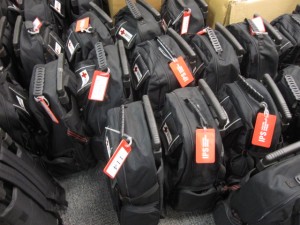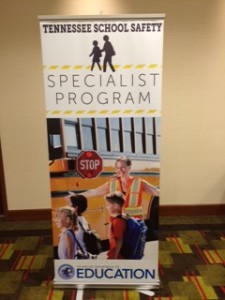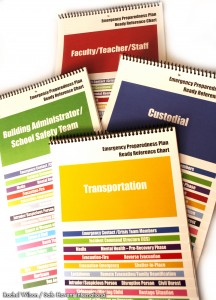
Most of the best school emergency kits we have seen were assembled by school employees. These kits were assembled by staff from the Indianapolis Public Schools System (IPS). IPS personnel issue the kits each fall, retrieve them each summer so they could be inventoried and re-issued to each school before school resumes in the fall.
School Emergency Kits an Old but Good Idea
About two decades ago, I first heard someone talking about emergency evacuation kits. Since that time, I have heard them referred to as crisis kits, go boxes, emergency kits, and a number of other names. Regardless of what you want to call them, they are a great idea for any school. School emergency kits are relatively easy to assemble and use and can make a huge difference in a school crisis situation.
What is a School Emergency Kit is
A school emergency kit is a relatively small and portable bag which contains information and supplies that the school crisis team will need to address a crisis once an evacuation or protective sheltering has taken place. The most practical kits we have seen are rolling back backs with a collapsible handle. The handle or backpack straps allow school staff to easily transport the kits down a flight of stairs or across uneven terrain, muddy or snowy ground. The folding handle and wheels can make it easier for someone to roll the kit for a mile down a paved road or sidewalk if an off-campus evacuation by foot is required.
Making Your Own School Emergency Kits
While a number of vendors have offered commercially available school crisis kits over the years, the four or five most impressive kits I have seen thus far have all been assembled by school crisis team members. While some of our clients have reported good success with commercial kits, we suggest school officials consider buying kit contents and assembling kits themselves.
What the School Emergency Kit Should Contain
While a group of school safety experts could debate the ideal specific contents for a school crisis kit for hours if not a full day, the following categories of items should be considered:
- Valuable information such as school crisis plans, emergency photo tour, and building floor plans
- Emergency medical supplies
- Flashlights, bullhorn and extra batteries
- High visibility vests
- Rescue whistles and other emergency signaling devices
Practice Using School Emergency Kits
A school emergency kit that has been forgotten in the high stress and fast breaking action of a major school crisis is of limited value. One way to reduce the chances that school emergency kits are left behind during an emergency is for staff to practice taking the kits with them whenever a drill requiring evacuation or sheltering for severe weather is conducted. By routinely taking the kits with them during drills, staff will increase the chances they will remember to do so during an actual emergency.

